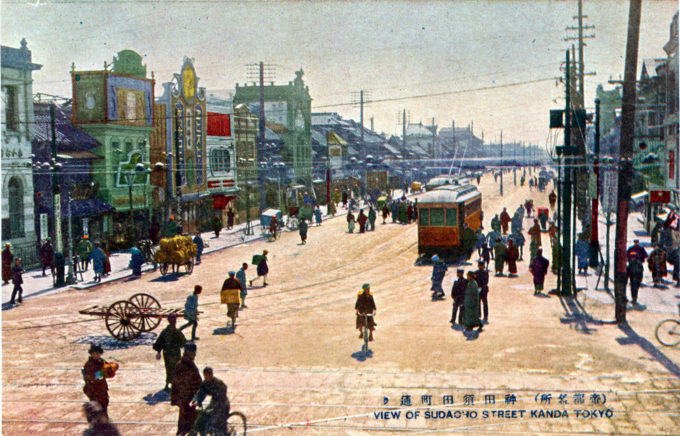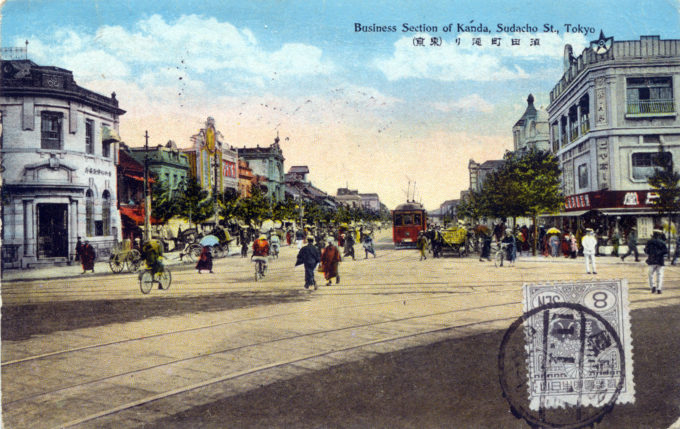See also:
Manseibashi Station, 1912-1936
“Generally speaking, the intersectons of the train-lines have become particularly busy, as a result of all the people getting on and off, and this too has brought about changes to the city. Places such as the corner of Owaricho in the Ginza, and Sudacho in Kanda, and Hirokoji in Ueno, and the various castle approaches have all changed drastically from what they were in days of old.
“If you look carefully you can see the biggest change of all has been in the types of people – an inevitable change brought about by the spread of transport.”
– Literary Life in Tokyo, 1885-1915: Tayama Katai’s Memoirs ‘Thirty Years in Tokyo’, by Katai Tayama, 1987
From the wiki: “After the Meiji restoration, Kanda, in particular the Sudacho area, was developed and enjoyed prosperity so long as Manseibashi station was a main rail terminal in Tokyo. Then, the Great Kanto Earthquake occurred in 1923 and destroyed everything. Sudachō once had a terminal which served for a number of the Tokyo City streetcar lines, and was one of the few areas that survived the firebombing of Tokyo in World War II, resulting in many historic buildings still existing.”



